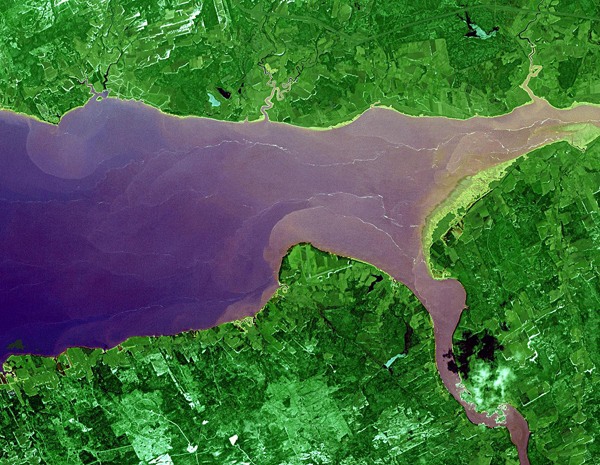
Ancient Tides Wildly Different Than Today

The ebb and flow of the tides is such a regular occurrence that almanacs predict them years in advance for coastal cities and beaches. But those predictions would have been pretty far off thousands of years ago.
Geological forces that act over hundreds to millions of years, such as plate tectonics, ice ages, land uplift, erosion and sedimentation, have caused the tides in certain places to vary wildly throughout history, a new study finds.
Some tides on the East Coast of the United States, for instance, may in the past have been enormously higher than they are today — a difference between low and high tide of 10-20 feet (3-6 meters), instead of the current 3-6 foot (1-2 m) range.
Tides in the Bay of Fundy in Nova Scotia, which today are among the most extreme in the world and have a range up to 55 feet (17 m), didn't amount to much at all about 5,000 years ago. But around that same time, tides on the southern U.S. Atlantic coast, from North Carolina to Florida, were about 75 percent higher.
One of the most interesting findings of the study, said study team member David Hill of Oregon State University, was that around 9,000 years ago, as the Earth was emerging from its most recent ice age, there was a huge amplification in tides of the western Atlantic Ocean. The tidal ranges were up to three times more extreme than those that exist today, and water would have surged up and down on the East Coast.

"In most of this research it was assumed that prehistoric tidal patterns were about the same as they are today. But they weren't, and we need to do a better job of accounting for this," said Hill, who studied the ancient tides with computer models.
One of the major variables in ancient tides, of course, was sea level changes that were caused by previous ice ages. When massive amounts of ice piled miles thick in the Northern Hemisphere 15,000 to 20,000 years ago, for instance, sea levels were more than 300 feet (91 m) lower.
Sign up for the Live Science daily newsletter now
Get the world’s most fascinating discoveries delivered straight to your inbox.
But it's not that simple, Hill said.
"Part of what we found was that there are certain places on Earth where tidal energy gets dissipated at a disproportionately high rate, real hot spots of tidal action," Hill said. "One of these today is Hudson Bay, and it's helping to reduce tidal energies all over the rest of the Atlantic Ocean. But during the last ice age Hudson Bay was closed down and buried in ice, and that caused more extreme tides elsewhere."
Having a better understanding of what influence's Earth's tides and changes in them will help scientists better predict future changes, Hill said.
"And there will be changes, even with modest sea level changes like 1 meter [3 feet]. In shallow waters like the Chesapeake Bay, that could cause significant shifts in tides, currents, salinity and even temperature," he said. The study was detailed in the Journal of Geophysical Research.
This story was provided by OurAmazingPlanet, a sister site to LiveScience.










